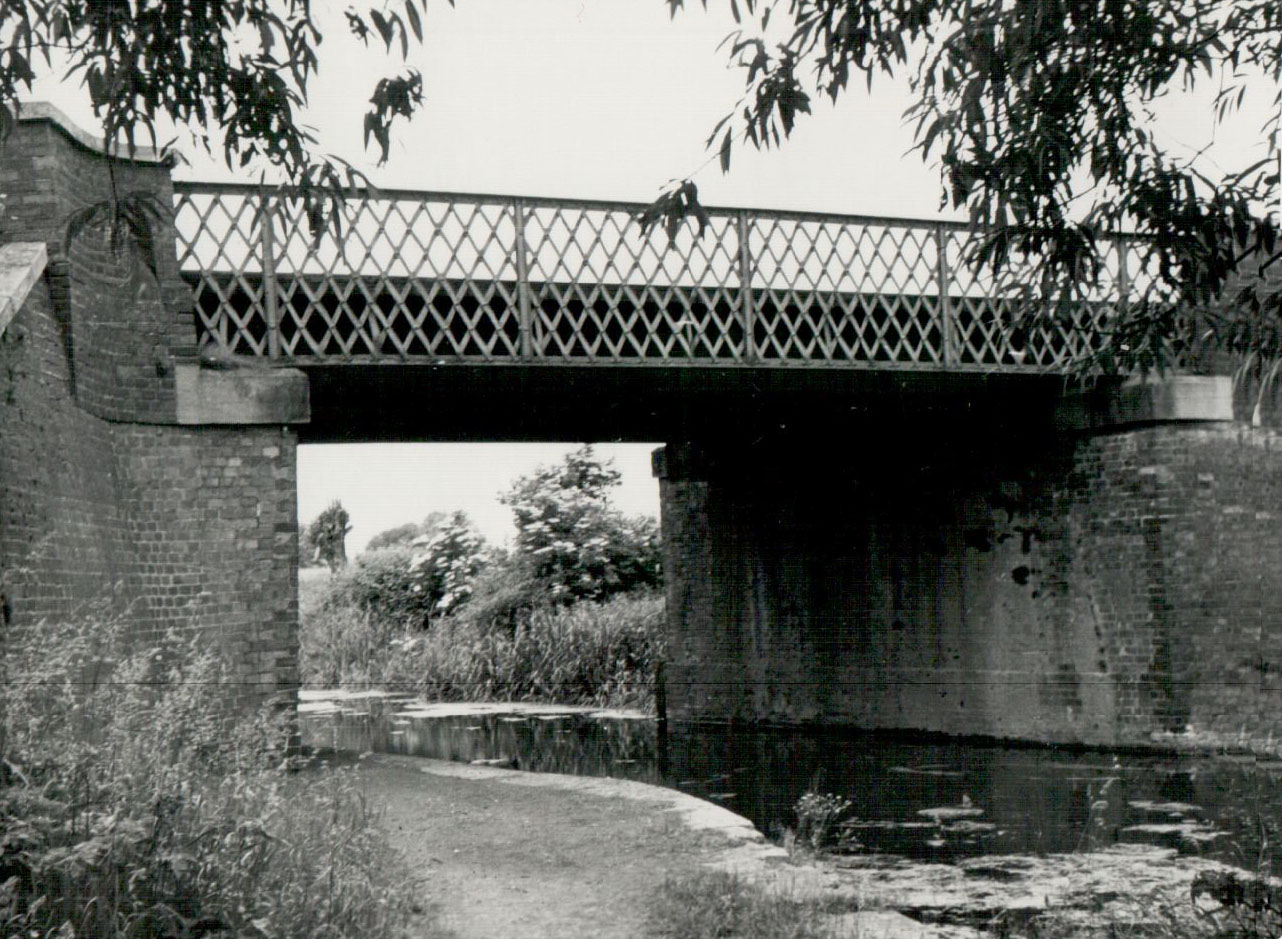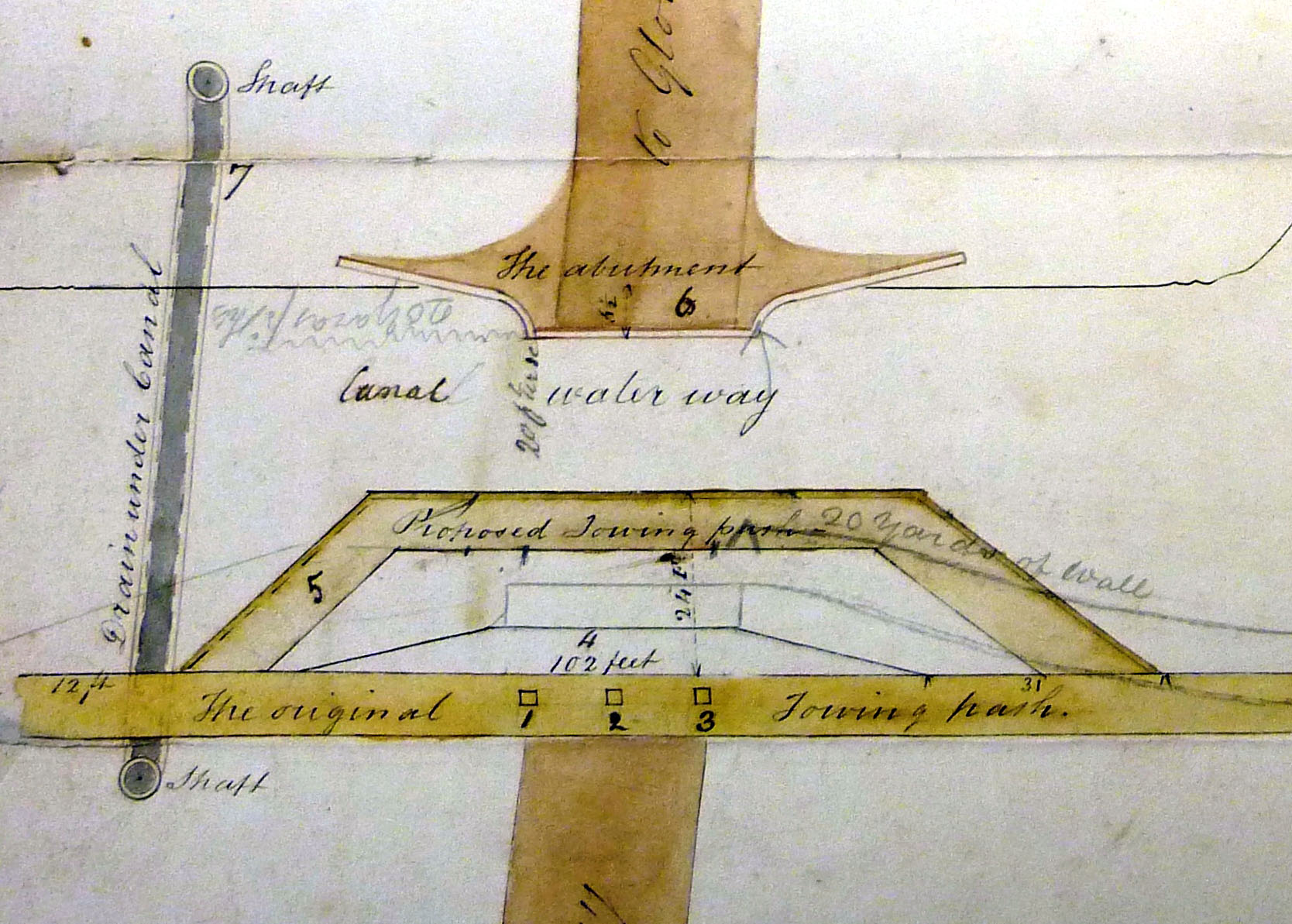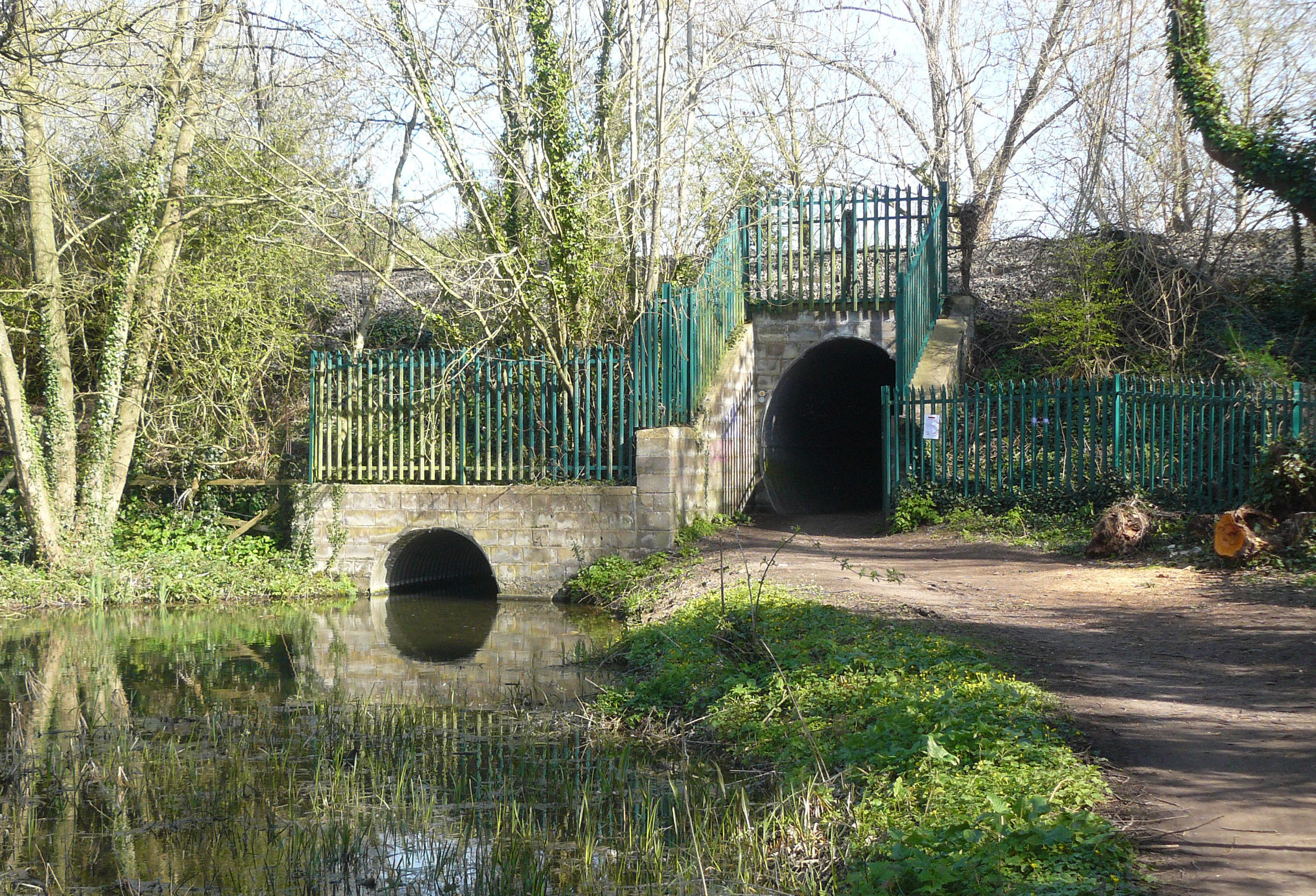

The original railway bridge was built in 1842-43 to carry the Bristol to Gloucester main line over the Stroudwater Canal. The Stroudwater Committee initially objected to the railway company's proposals, but after some very difficult negotiations, agreement was reached and trains started running over the bridge in 1844. Following the closure of the canal, the bridge was replaced in 1968 by an embankment with two Armco pipes to allow the passage of water and pedestrians.
Work on the embankment that would carry the railway was under way in December 1841 when the Stroudwater Committee agreed the railway contractor could erect a temporary bridge over the canal for use by his workmen (D1180/1/4 p228). A few months later, a difficulty arose when the bridge collapsed, holding up traffic for a time. Barge captain Charles Bosley wrote to the Stroudwater Committee 'As the railway bridge is broken down into the canal and have entirely stopped your canal, I cannot pass it. I shall register the hours so as I may be paid for the time' (D1180/9/1 p28). The Committee immediately asked the contractor for payment of £50 for each 24 hours that navigation was stopped - in accordance with the penalty clause they had managed to get inserted into the railway company's authorising Act of Parliament (D1180/1/4 p240).


Relations soon became further strained when the Committee found out that the railway company planned to restrict the width of the waterway at the bridge and to drive a drain under the canal, they immediately objected strongly on the grounds of inconvenience and not being mentioned in the authorising Act (D1180/1/4 p242). After an exchange of letters did not resolve the matter, a sub-committee visited the site and returned with an alarming report in November 1842. They found that one bridge abutment had already been built on one side of the canal and a longitudinal dam had been put into the canal for the towpath on the other side, reducing the width of the waterway to 18ft. They also found that a brick-lined drain had already been driven under the canal about 20ft westward of the site of the intended bridge, but canal water had escaped into the drain and work had been suspended. The drain was needed to take the water from the main road to the north - as the road was being lowered in a cutting where it passed under the railway and the water would no longer drain into the canal (D1180/1/4 p256c-f; D1180/9/1 p34-35).
The full Committee realised that they had to accept some changes, but they demanded a waterway width of at least 26ft and an indemnity against any problems with the drain. After consulting with chief engineer Isambard Kingdom Brunel and a further exchange of letters, the railway company offered to increase the waterway width to 25ft and to provide the required indemnity for the drain. The Committee accepted these terms, and by 20 January 1843, water had been let out of the canal and construction of the southern abutment was in progress (D1180/1/4 p256l-q).
The original bridge had brick piers spanned by massive wooden beams topped by wooden planks which supported broad gauge rails mounted on longitudinal sleepers on a layer of ballast. Trains started running over the bridge in July 1844. Ten years later the line was converted to standard gauge, and at some time the wooden beams were replaced by a steel structure (Maggs, Bristol & Gloucester Railway 1992 p21-22, 30).


Following the closure of the canal, the bridge was replaced by an embankment with two Armco pipes to allow the passage of water and pedestrians. Such an action had been foreseen in the 1954 Act which relieved the Stroudwater Company of the responsibility of maintaining the right of navigation, and the Committee could not object. The only issue raised was that Stonehouse Parish Council knew that a local farmer occasionally took cattle along the towpath, and they expressed concern that two cows side by side could get stuck in the pipe proposed for pedestrians. (D1180/acc13370/box1/4) Apparently British Railways first spread gravel into the bed of the canal and allowed it to settle for several weeks, and then they installed the culverts and built the embankment during one summer weekend in 1968 (D1180/acc12569/box 5/11 p7; Tucker, Stroudwater Canal 2003 p117).
The infill was replaced by a new bridge in December 2021 as part of the Cotswold Canals Connected Project, and this is now known as the Ocean Jubilee Bridge.